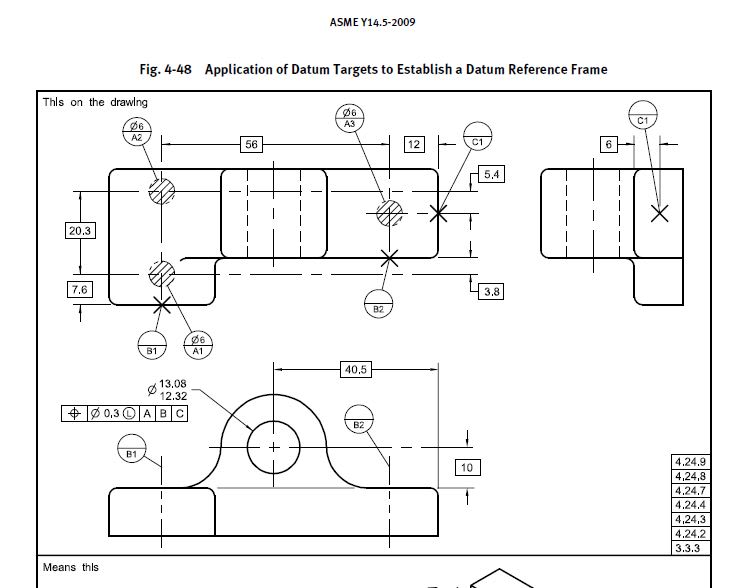ASME Y14.5-2009
Question #1: I have an internal checker who is claiming that would be wrong (illegal) to add flatness on the surface where datum targets area A (Ø6) are shown.
By the same token,
Question #2: adding a perpendicularity callout (to A primary) for the surface where datum targets lines B are shown (considering that feature is continuous/planar and not, as shown, stepped, separated by basic dimension). The same checker is claiming that such approach is against the Y14.5 standard.
He does not want adding the perpendicularity (or flatness for that matter) because there are no figures in the Y14.5 where such method is shown.
Is this argument good enough to consider it valid? Is this practice against the standard?

Question #1: I have an internal checker who is claiming that would be wrong (illegal) to add flatness on the surface where datum targets area A (Ø6) are shown.
By the same token,
Question #2: adding a perpendicularity callout (to A primary) for the surface where datum targets lines B are shown (considering that feature is continuous/planar and not, as shown, stepped, separated by basic dimension). The same checker is claiming that such approach is against the Y14.5 standard.
He does not want adding the perpendicularity (or flatness for that matter) because there are no figures in the Y14.5 where such method is shown.
Is this argument good enough to consider it valid? Is this practice against the standard?


![[bigsmile] [bigsmile] [bigsmile]](/data/assets/smilies/bigsmile.gif) .
.